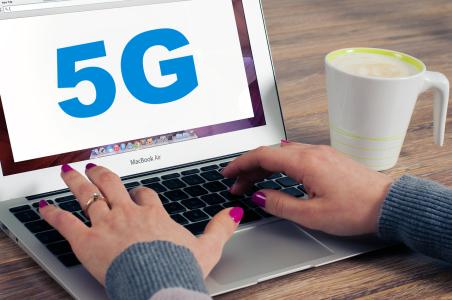According to LightReading, Huawei said it will invest 800 million US dollars in 5G research and development this year, and strive to become the pioneer of the next generation of mobile technology. Let's take a look at the relevant content.
Huawei invested about $12 billion in research and development last year, and now the company promises to invest between $10 billion and $20 billion this year.
This R&D investment promises to dwarf its main competitors' R&D investment last year: Ericsson's 2017 net R&D expenditure is about $4.1 billion, and Nokia's R&D spending last year was about $4.6 billion.
Huawei (this year) only invested in 5G is close to nearly one-fifth of Ericsson's overall R&D spending last year.

At the same time, Nokia has warned investors that this year's 5G investment will squeeze its profitability. The company expects its operating profit margin in 2018 to be 9%-11%, down from 15.1% in the fourth quarter of 2017, and its operating profit for its online business declined by a quarter in the same period last year.
Huawei surpassed Ericsson in 2015 to become the world's largest communications equipment supplier. At a recent press conference in London, Huawei announced details of its 5G strategy.
Zhou Yuefeng, chief marketing officer of Huawei's wireless network product line, said that Huawei has been engaged in 5G research and development for more than ten years, and has hired more than 300 5G experts worldwide to lead the development of this technology.
Huawei claims to have established a leadership position in Massive MIMO, which has shipped more than 20,000 Massive MIMO units to more than 40 4G networks.
Analysts say that Chinese companies, including Huawei and ZTE, have led Ericsson and Nokia in Massive MIMO because the technology was originally designed for TDD networks that are widely used in the Chinese market. Operators in North America and Europe tend to choose FDD systems.
Zhou Yuefeng also told reporters that Huawei will release some "end-to-end" 5G products at the upcoming MWC conference at the end of this month, including innovations in core networks, transmission networks and wireless networks, and terminals.
Huawei will continue to develop wireless access networks that can support multiple generations of technologies and multiple frequency bands, and expects to have 100 billion 5G terminal connections by 2025.
At the same time, Huawei executives also urged the European government to provide more support for operators to invest in 5G networks.
According to Huawei estimates, global operators' capital expenditures are between $300 billion and $330 billion a year, and there is a fairly balanced investment between “active†network systems and “passive†facilities.
However, Huawei expects operators to need more passive facilities when launching 5G networks. "The role of the government will be to help operators reduce these passive facilities investments," said Ding Wei, president of Huawei operator BG. “For example, the Irish government is encouraging operators to work with power companies, and the Spanish government is encouraging public-private partnerships to reduce investment in facilities.â€
Ding also pointed out that the European government charges too much in the spectrum license auction, and said that this may lead to a slowdown in the launch of 5G networks. He said: "The spectrum cost in Europe is still too high. With a reasonable spectrum cost range, operators will have more funds to invest in 5G deployment."
This remark has raised concerns that 5G deployments may take years in parts of the world because telecom operators still rely on the 4G networks they have built.
The plan to launch a 5G spectrum auction later this year in Germany has caused uneasiness among operators in the country. According to reports, Deutsche Telekom and Telefónica Germany said they are worried that the authorities may charge too much for the spectrum and impose heavy conditions on them.
Huawei further pointed out that the return is still a huge challenge in the European market, and the fiber coverage in the region is estimated to be only 30%-50%.
With the introduction of 5G services, operators will increasingly need high-speed fixed lines for "backhaul" connections between base stations and core networks. “How to deal with this challenge is what operators need to understand.â€
One way, he said, is to use 5G microwave technology when fiber is not available.
Huawei's latest release occurred after 3GPP frozen the 5G NR standard at the end of 2017. By using 5G NR, operators will be able to launch "non-independent" 5G technology versions that rely on 4G core networks.
"Independent" standards, including core network functions, will be frozen in June this year. “Those countries that might choose independent or non-independent 5G networks will eventually turn to independent standards.†Zhou Yuefeng said, “This is why compatibility between terminals and devices is needed.â€
French telecommunications company Orange said this week that it is unclear how operators will invest in non-independent 5G networks to achieve a transition to independent 5G networks in the future.
Electric Feet Warmers,Electronic Foot Warmers,Electric Feet Warmers Like Shoes,Heating pad for foot pain,Electric Foot warmer for bed
Ningbo Sinco Industrial & Trading Co., Ltd. , https://www.newsinco.com
